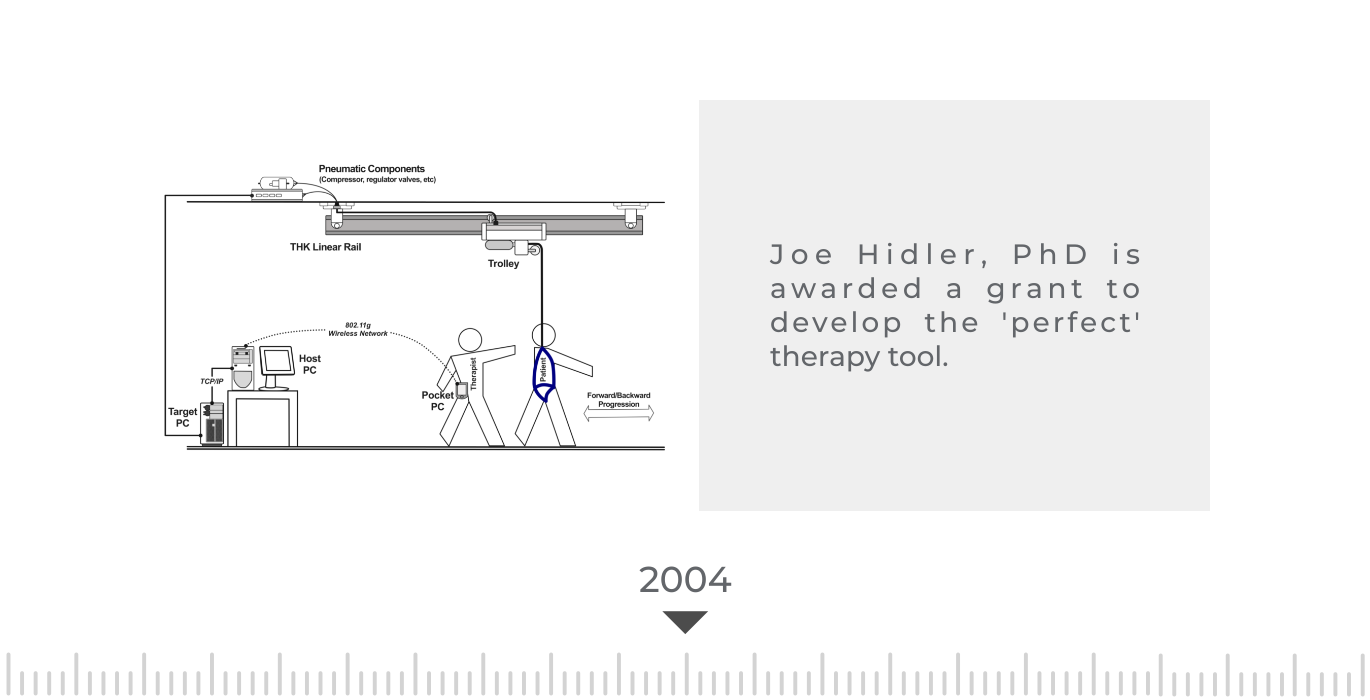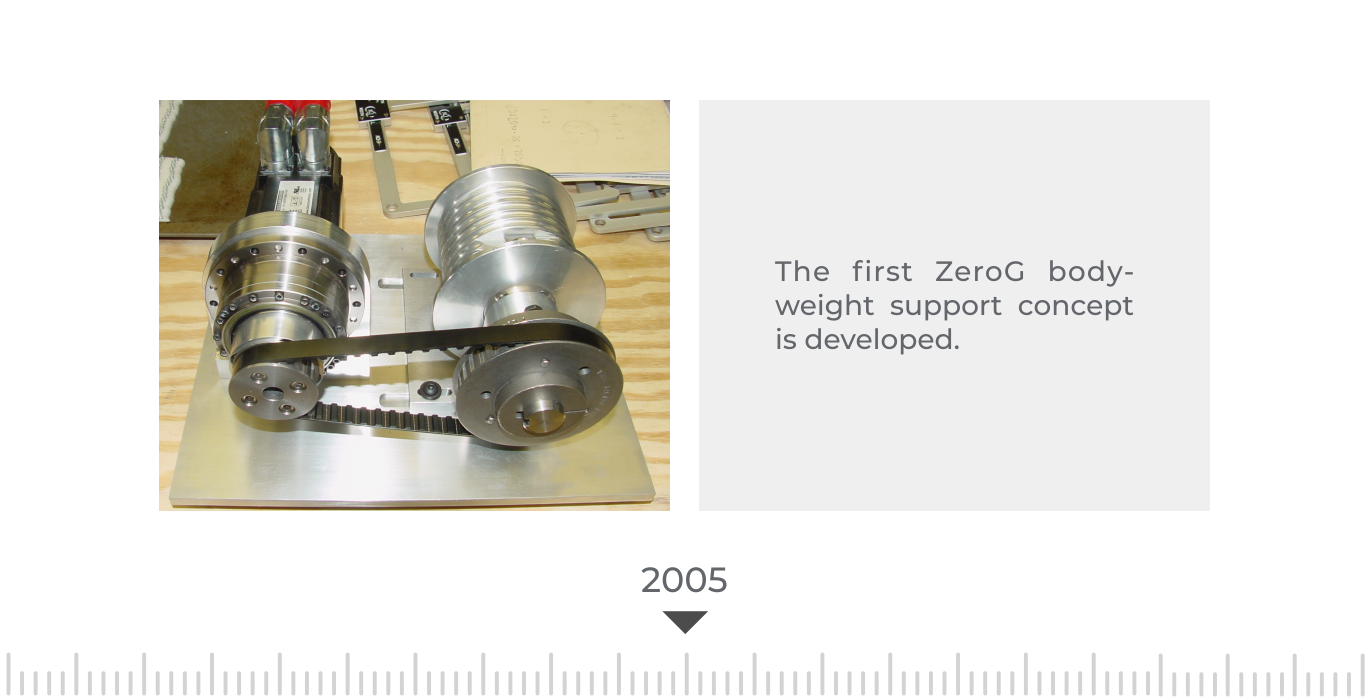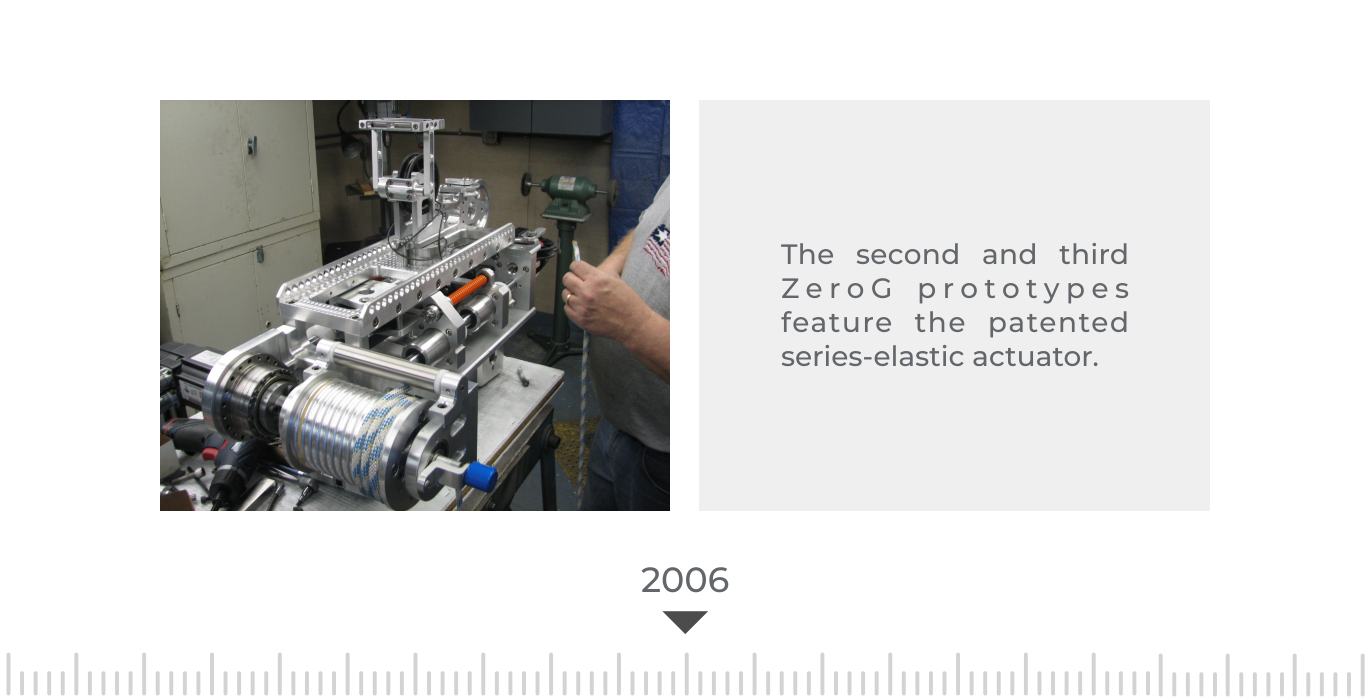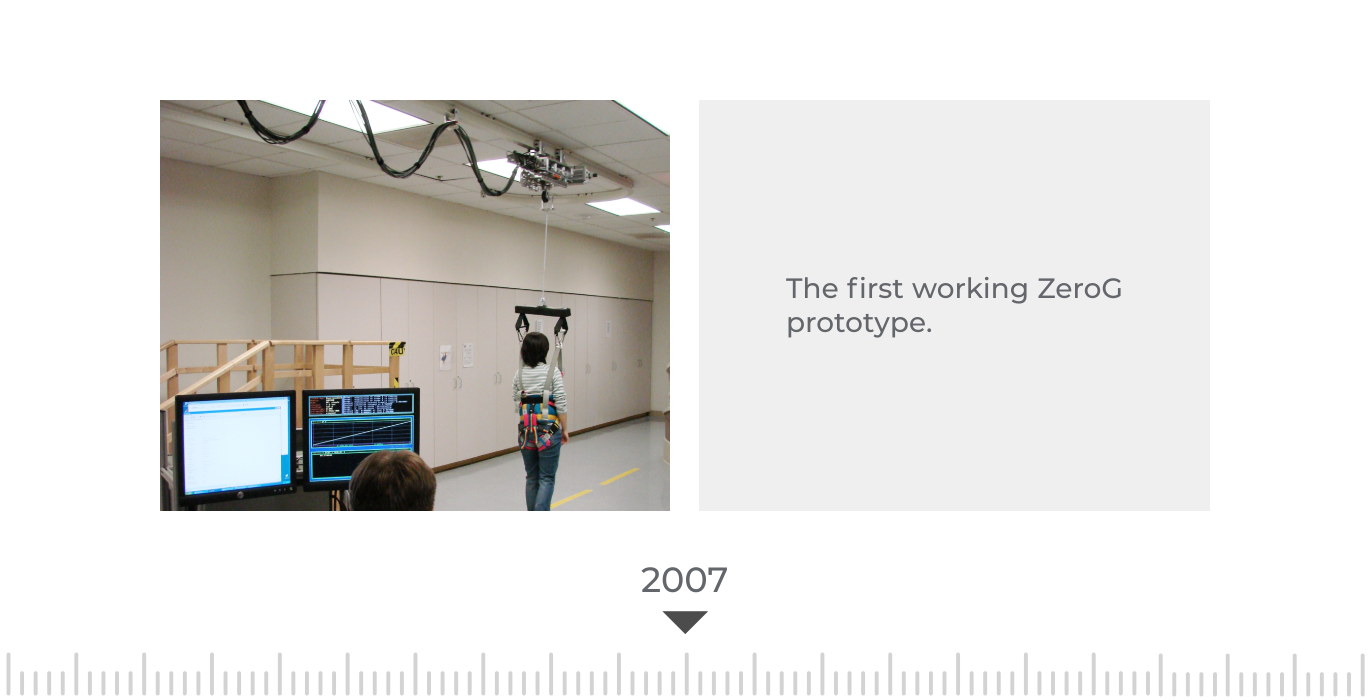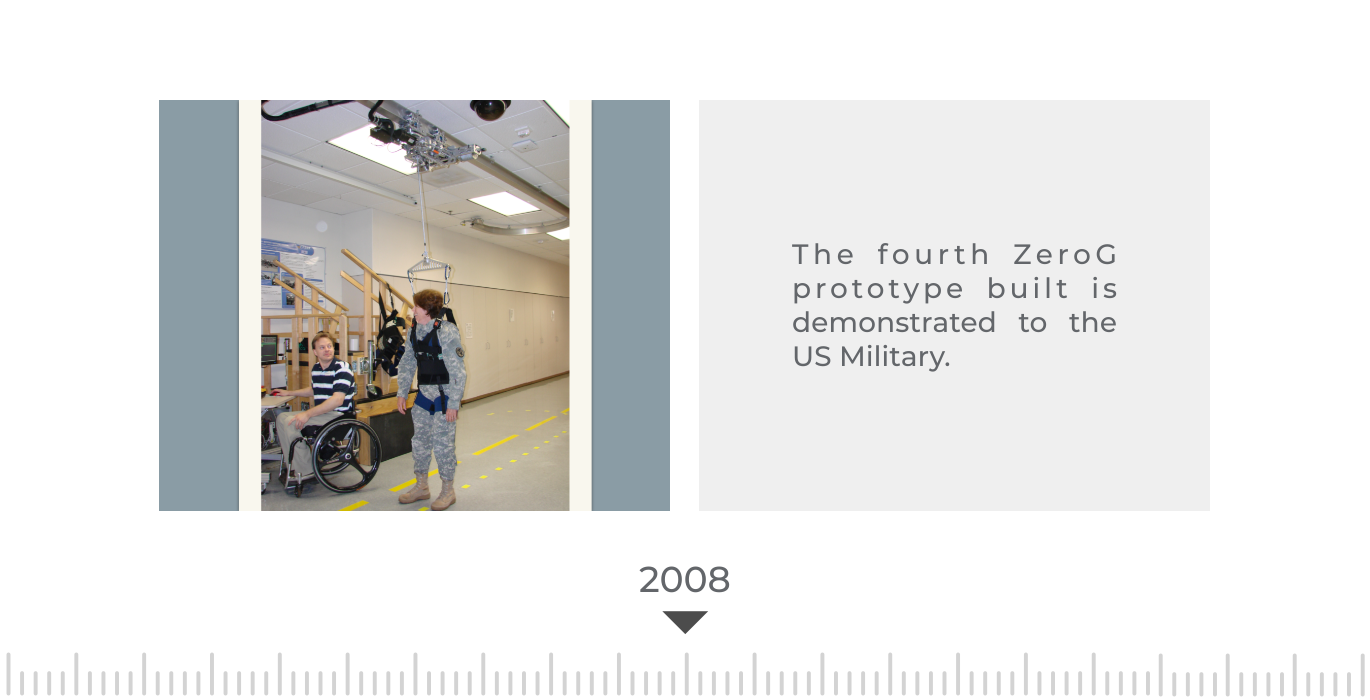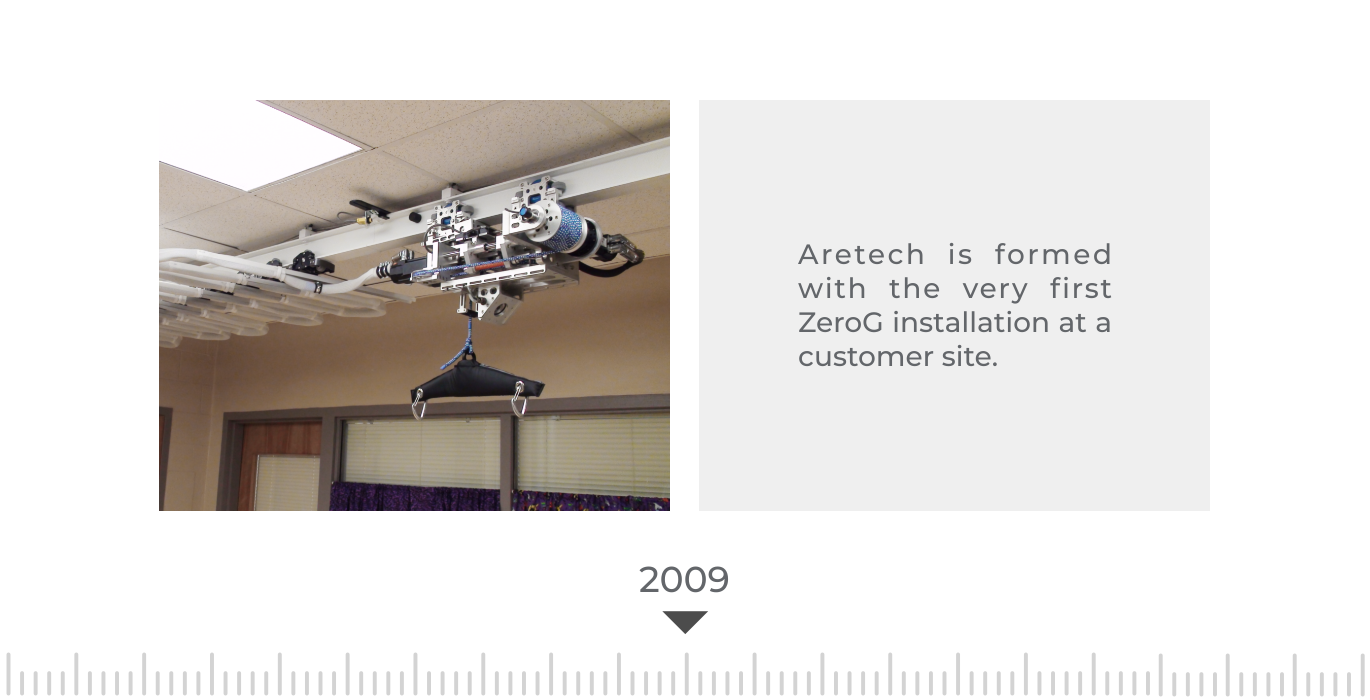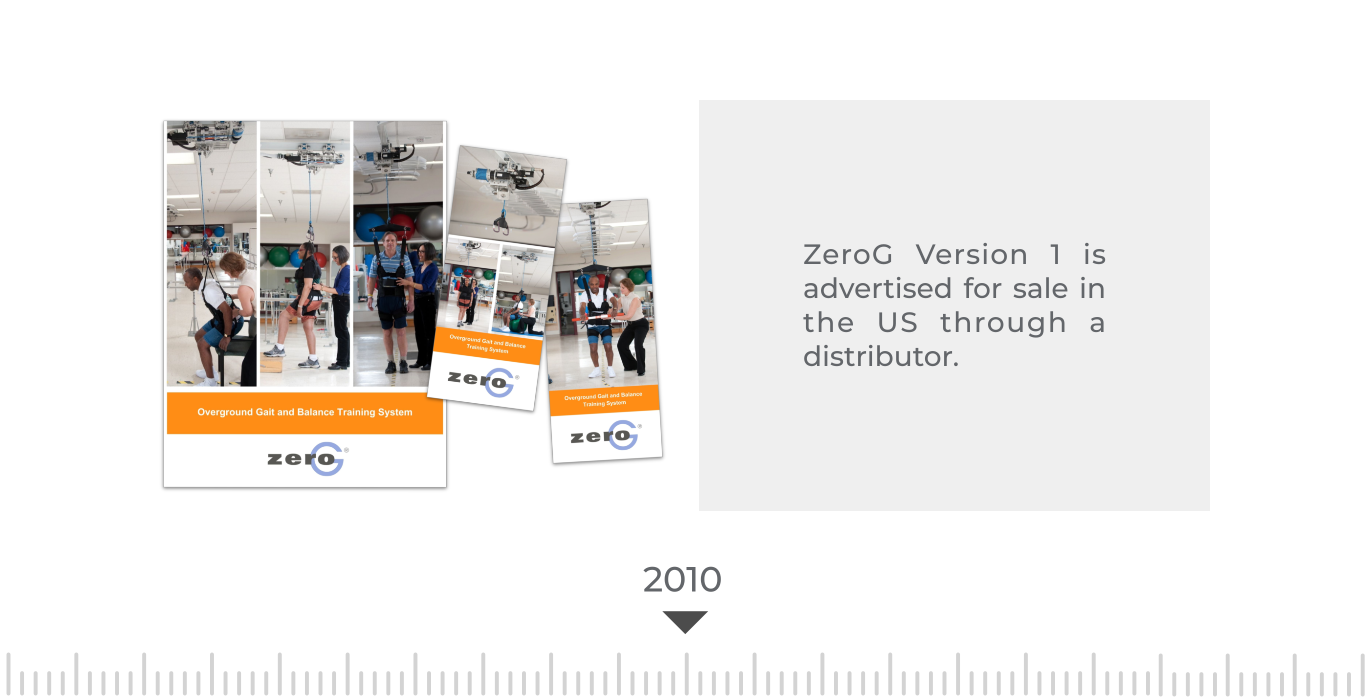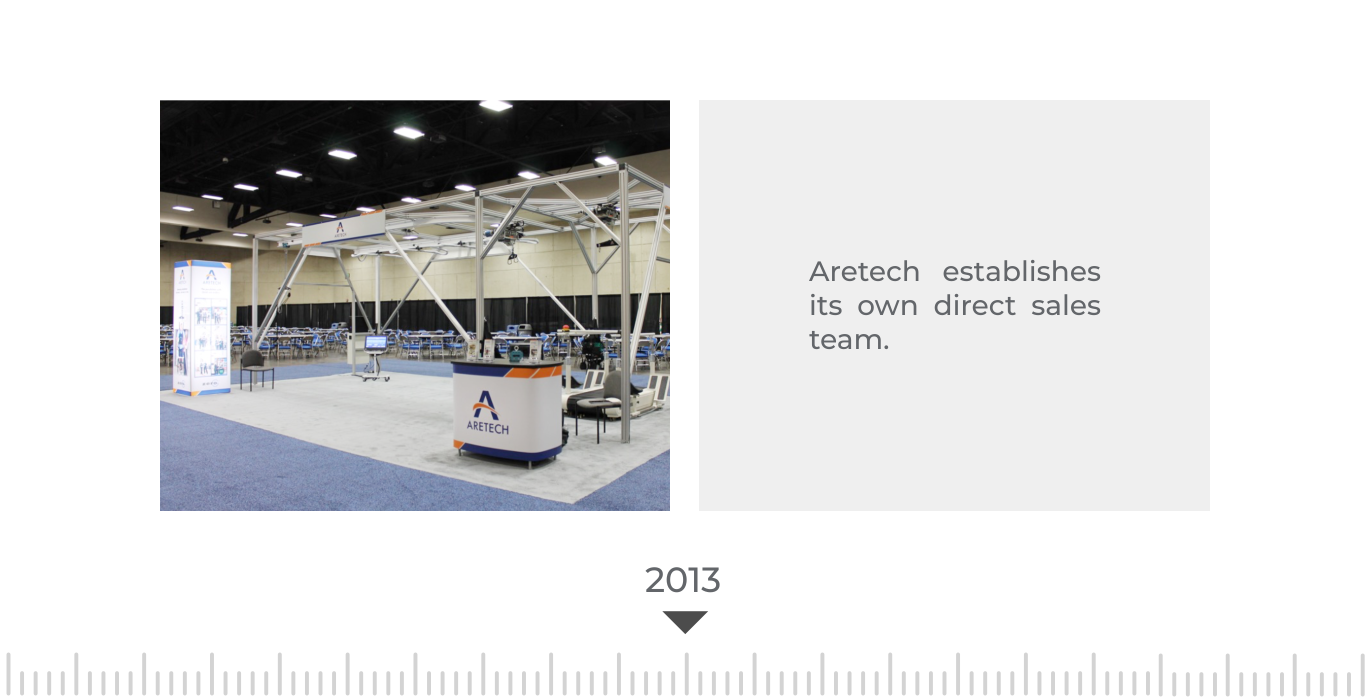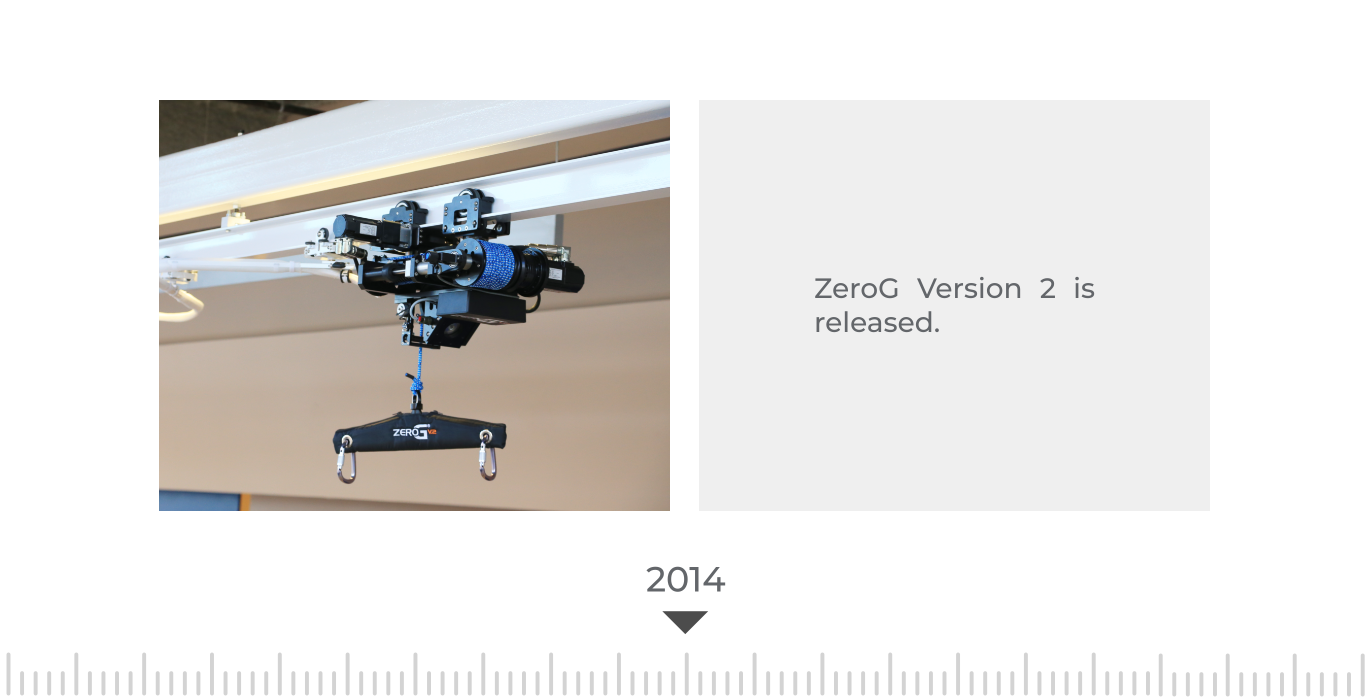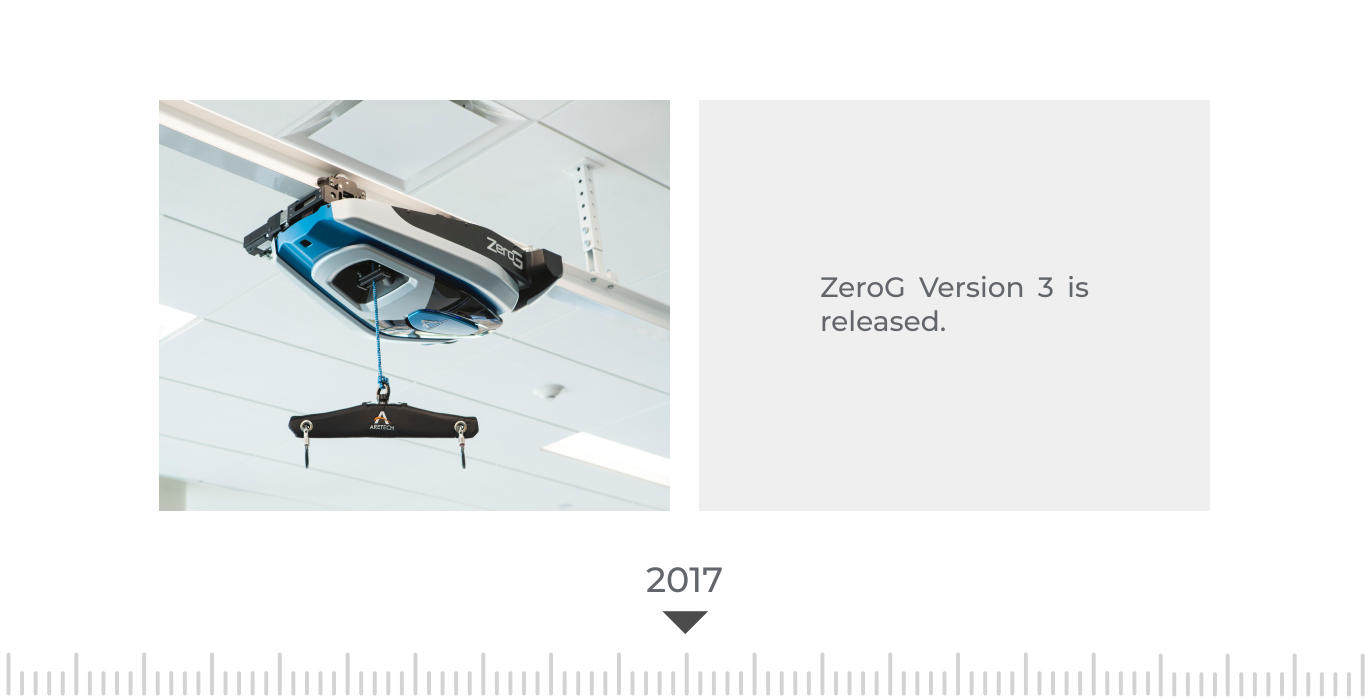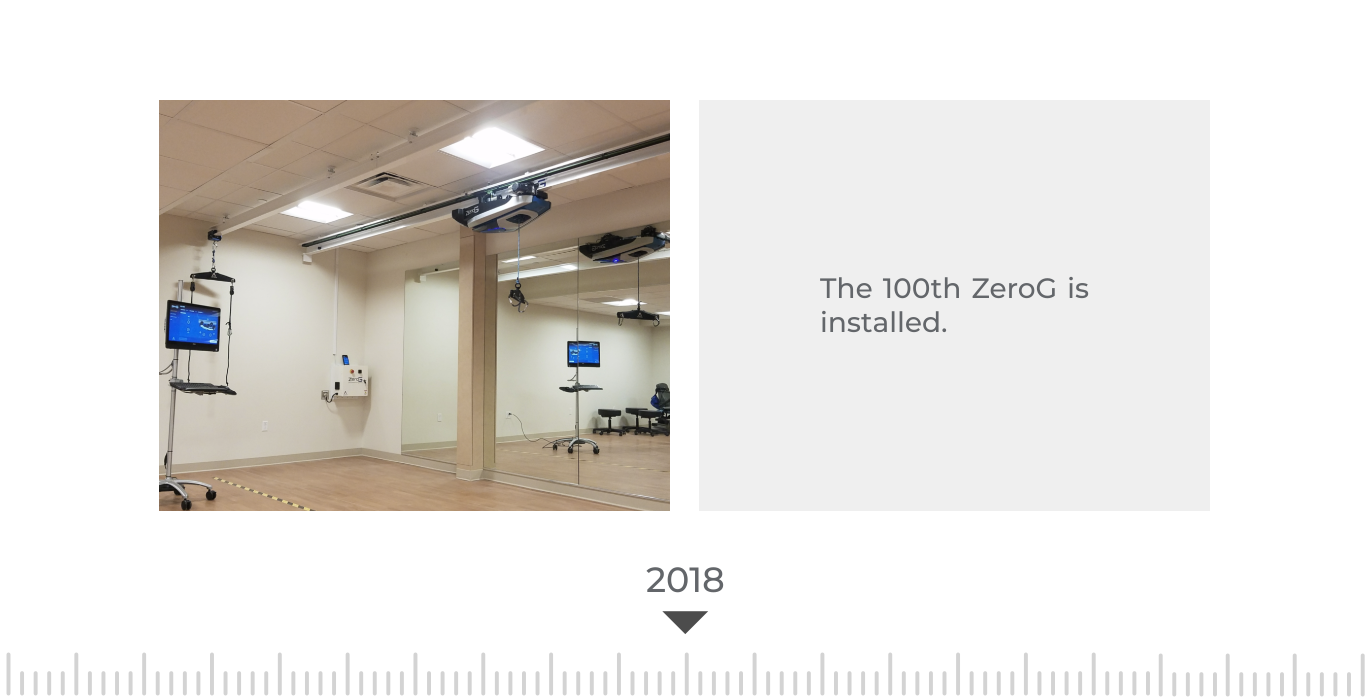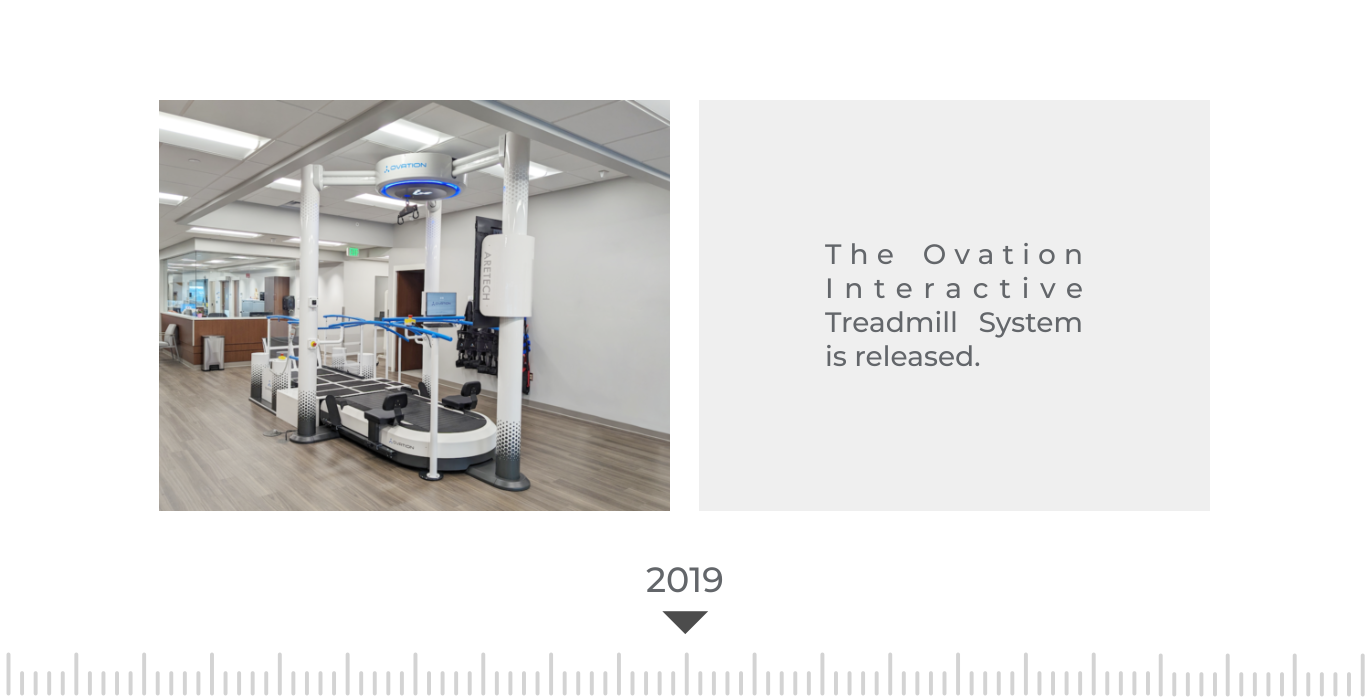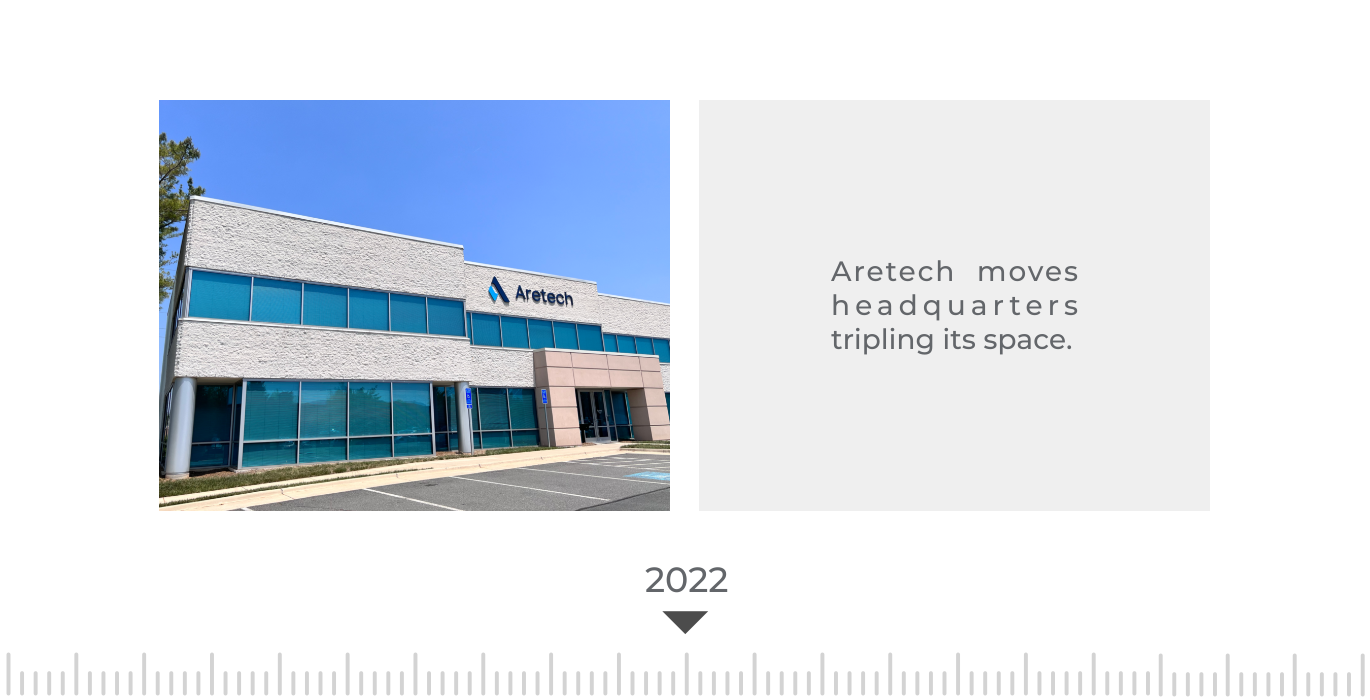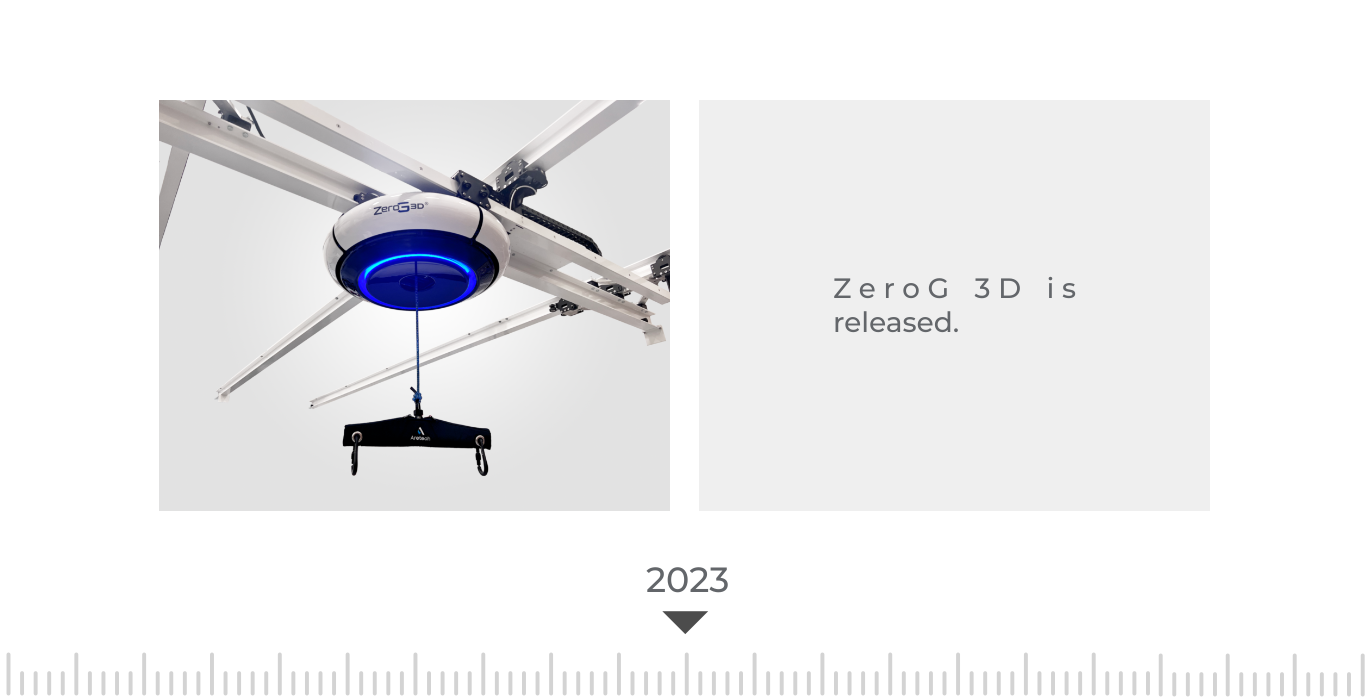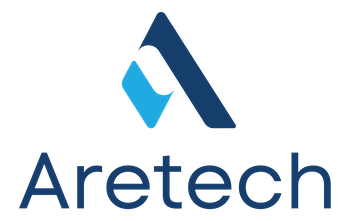Development Timeline
In 2004, Dr. Joe Hidler was directing the Center for Applied Biomechanics And Rehabilitation Research at National Rehabilitation Hospital (NRH) in Washington, DC. With a grant from the US Military to help injured veterans returning from Afghanistan and Iraq, Dr. Hidler assembled a team of engineers and therapists to create the “perfect” therapy tool. He envisioned a device which could safely treat a wide variety of patients of all functional levels, allow patients to practice functional activities while allowing them to learn from their mistakes, encourage patient-therapist interaction, and must be set up within minutes to take full advantage of therapy time.
With no other product in existence to reference as a baseline, the team forged into unchartered territory. Many ideas were offered up for consideration which proved to be dead-ends; jet packs, balloons, bungee cords…no idea was off limits! There were many challenges along the way and sometimes it seemed impossible that this perfect therapy tool would ever come into existence. One day while on the verge of giving up, the epiphany came to Dr. Hidler while on a train between New York City and Washington, DC. He sketched out a drawing on the back of a cocktail napkin and finally, in 2006, a spring-based prototype gave the team the hope and insight for what would one day become the ZeroG Gait and Balance Training System.
As ZeroG was developed, the team of engineers would meet every Friday morning with therapists at NRH to ensure their creation remained user-friendly to those who would ultimately be using the system. In 2008 the very first patient used ZeroG in therapy. As more clinicians and researchers were introduced to Dr. Hidler’s invention, they asked for a ZeroG in their own clinics. It became obvious that this technology needed to spread beyond the walls of National Rehabilitation Hospital. Aretech, which stands for “Advanced Rehabilitation Technologies” was formed in 2009 in order to bring ZeroG to market.
Although that cocktail napkin is long gone, the legacy of that train ride still lives on with the many patients, therapists and researchers who use ZeroG to this day. Just as the development of ZeroG has been a journey, we know many patients face challenges of their own as they journey through their recovery. It is our sincere hope that Aretech products continue to be an important part of the recovery process for so many people in helping achieve optimal recovery outcomes. Just as we were the first to invent a robotic overground body-weight support system, we continue to move the field of rehabilitation forward with unique features and innovative products.

